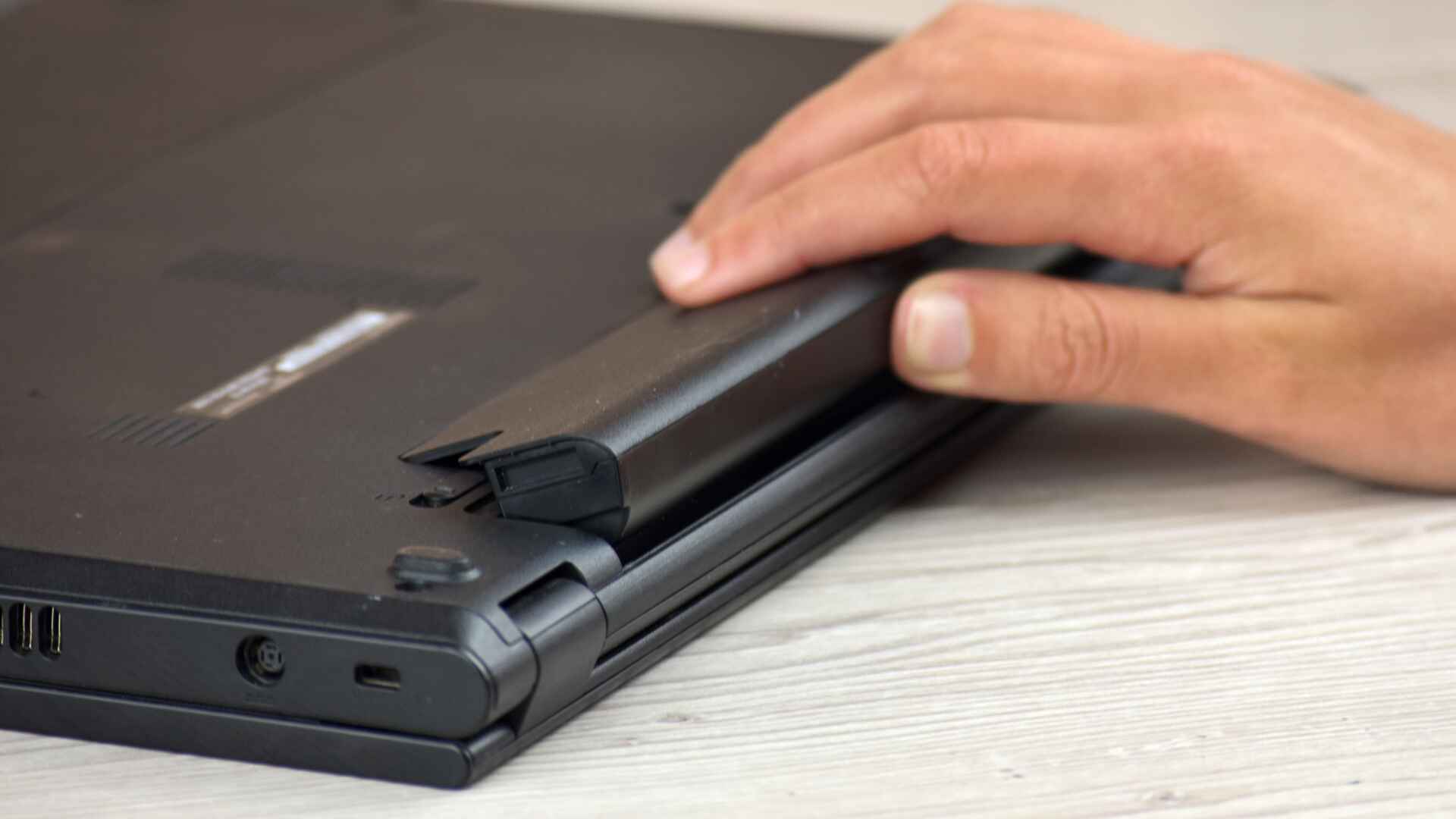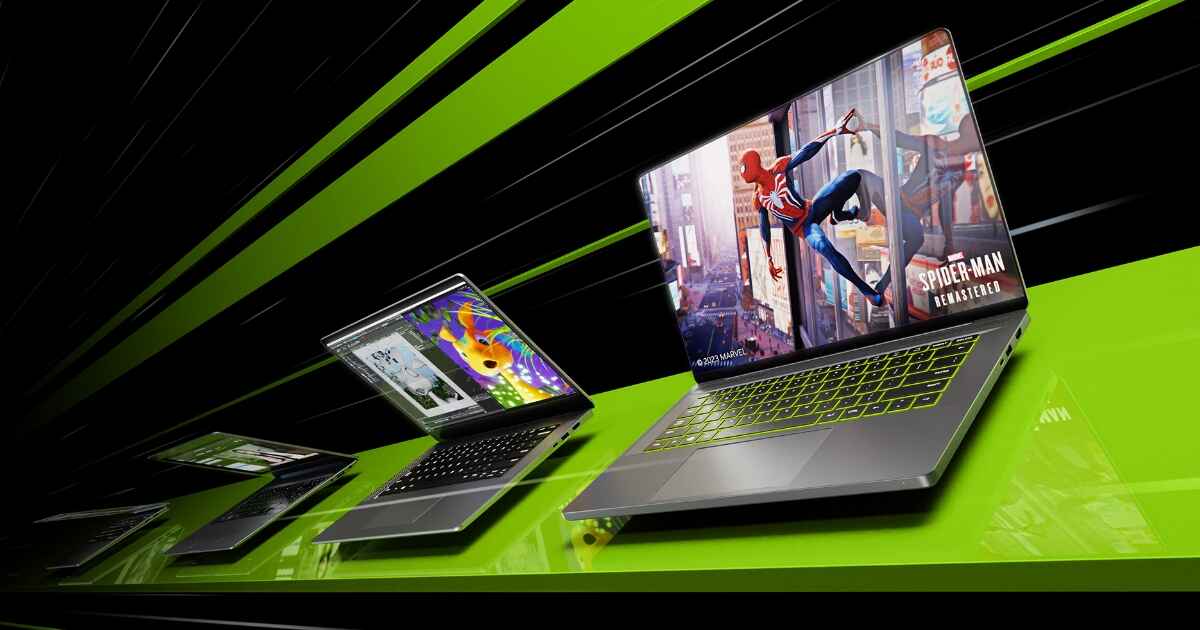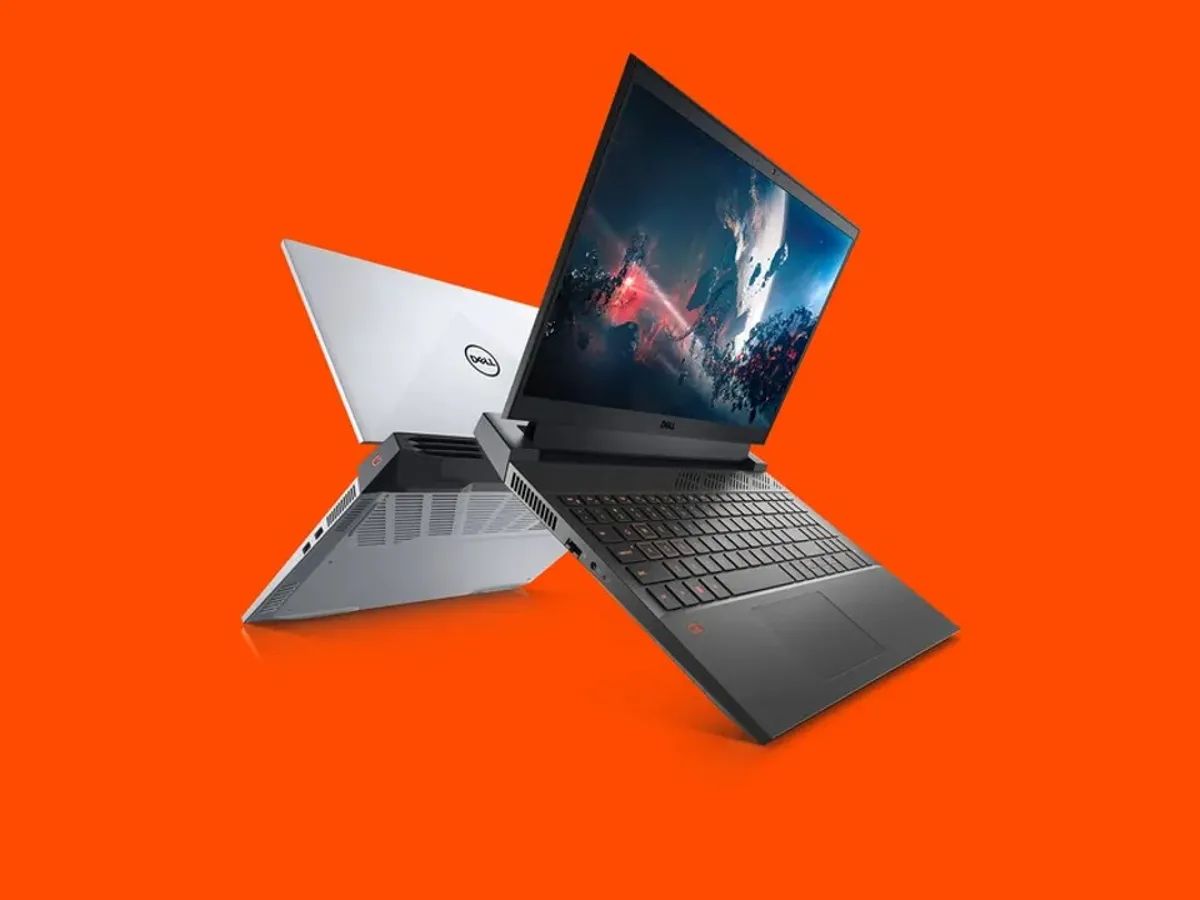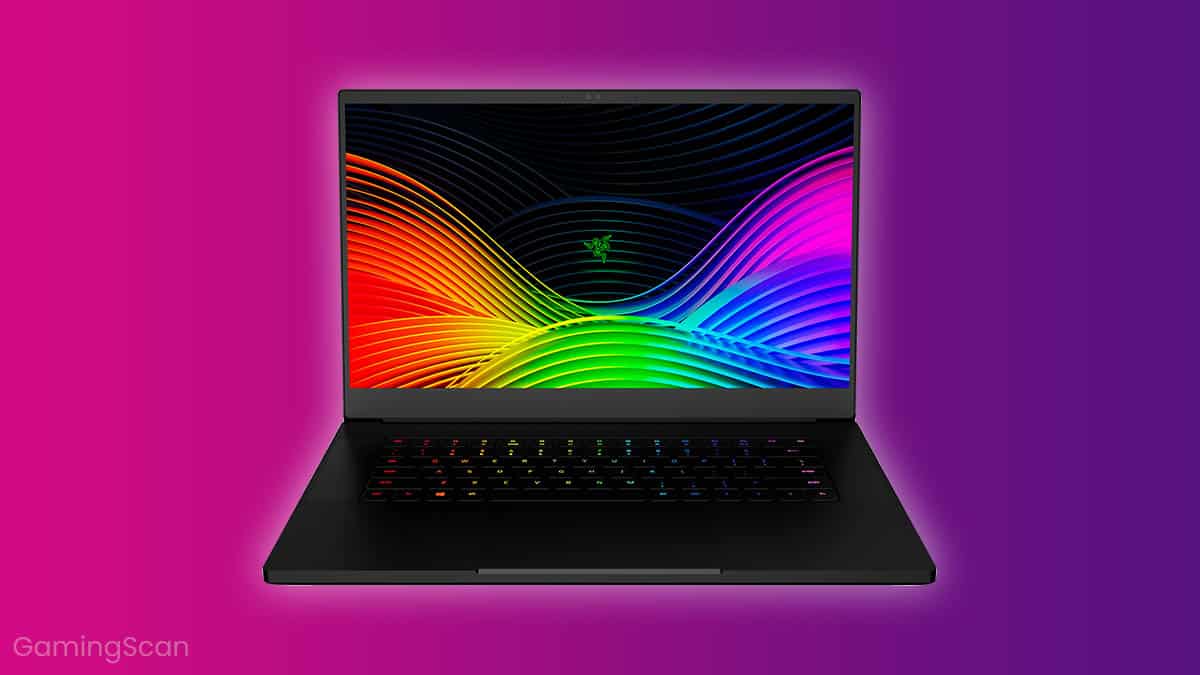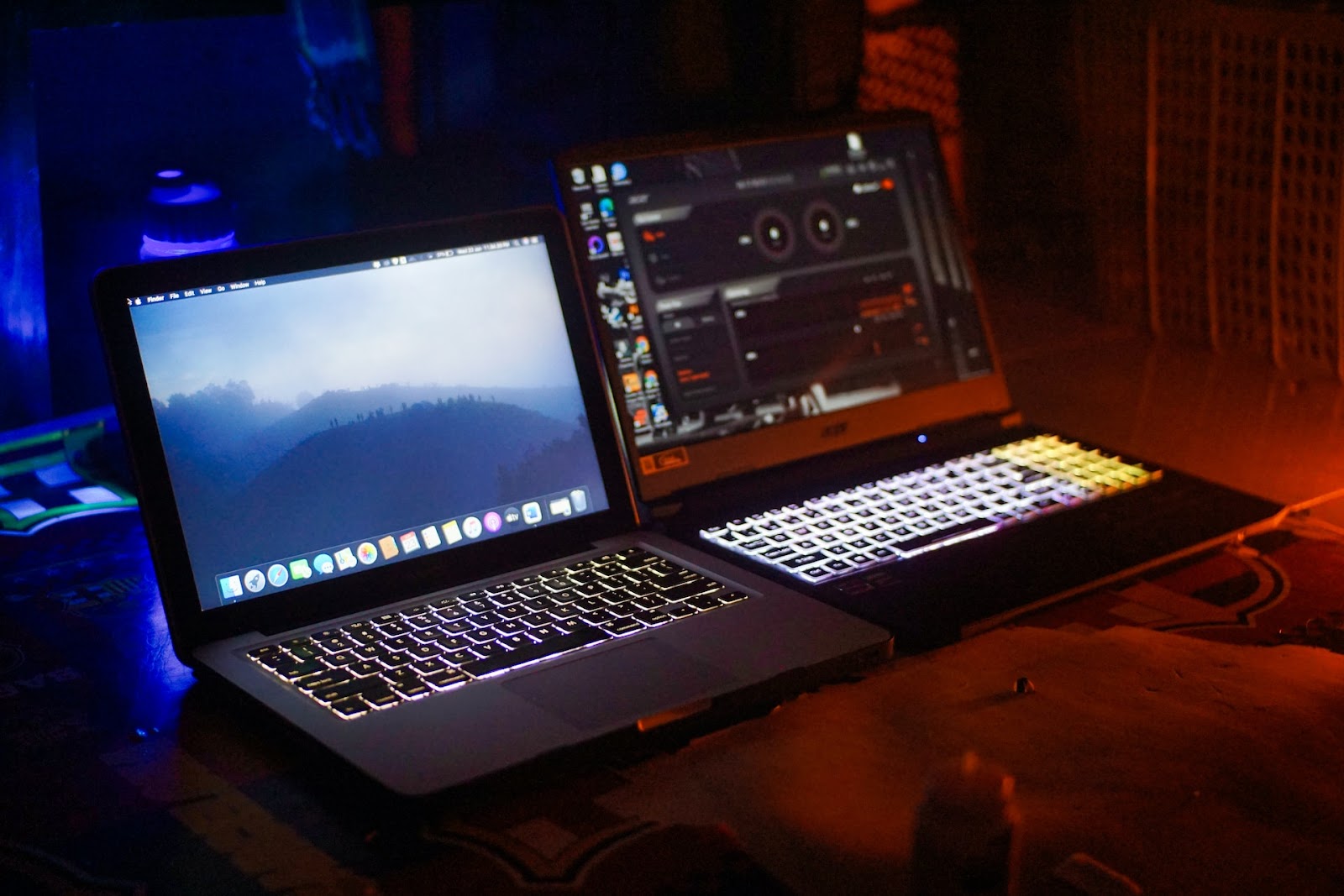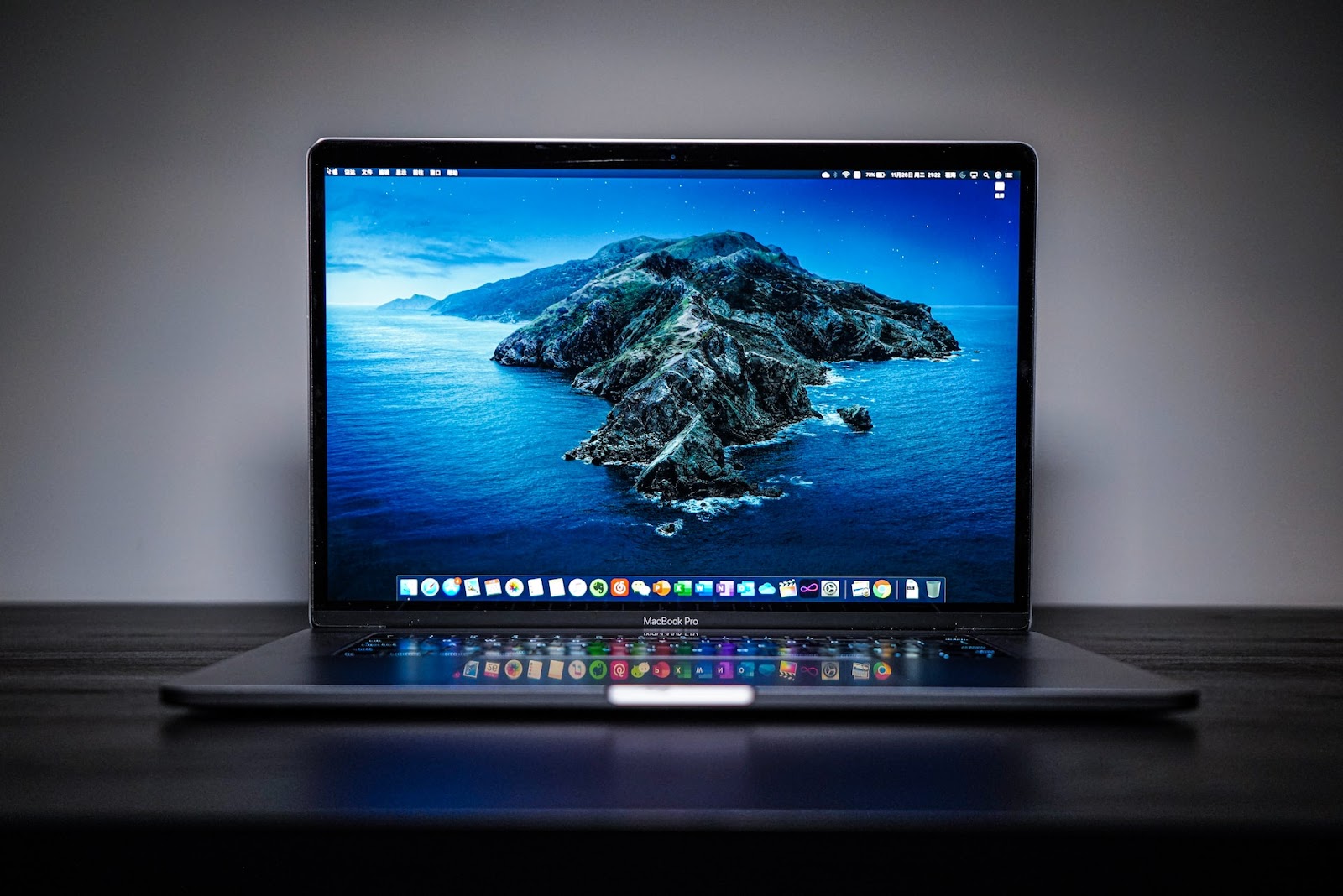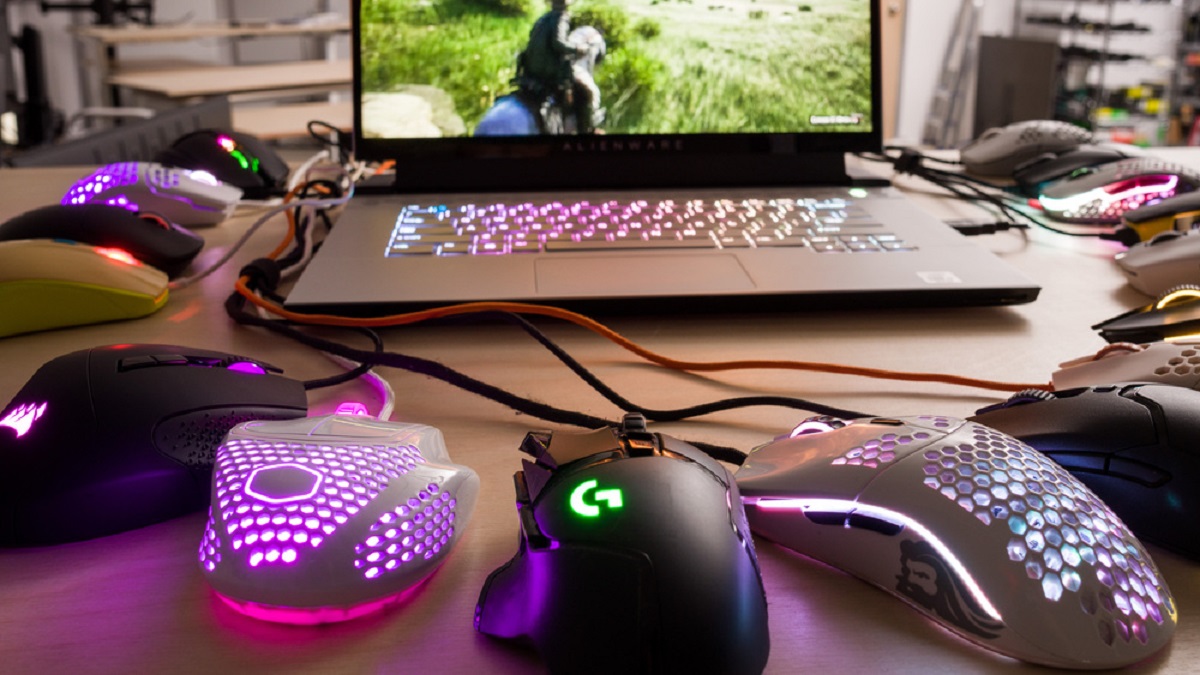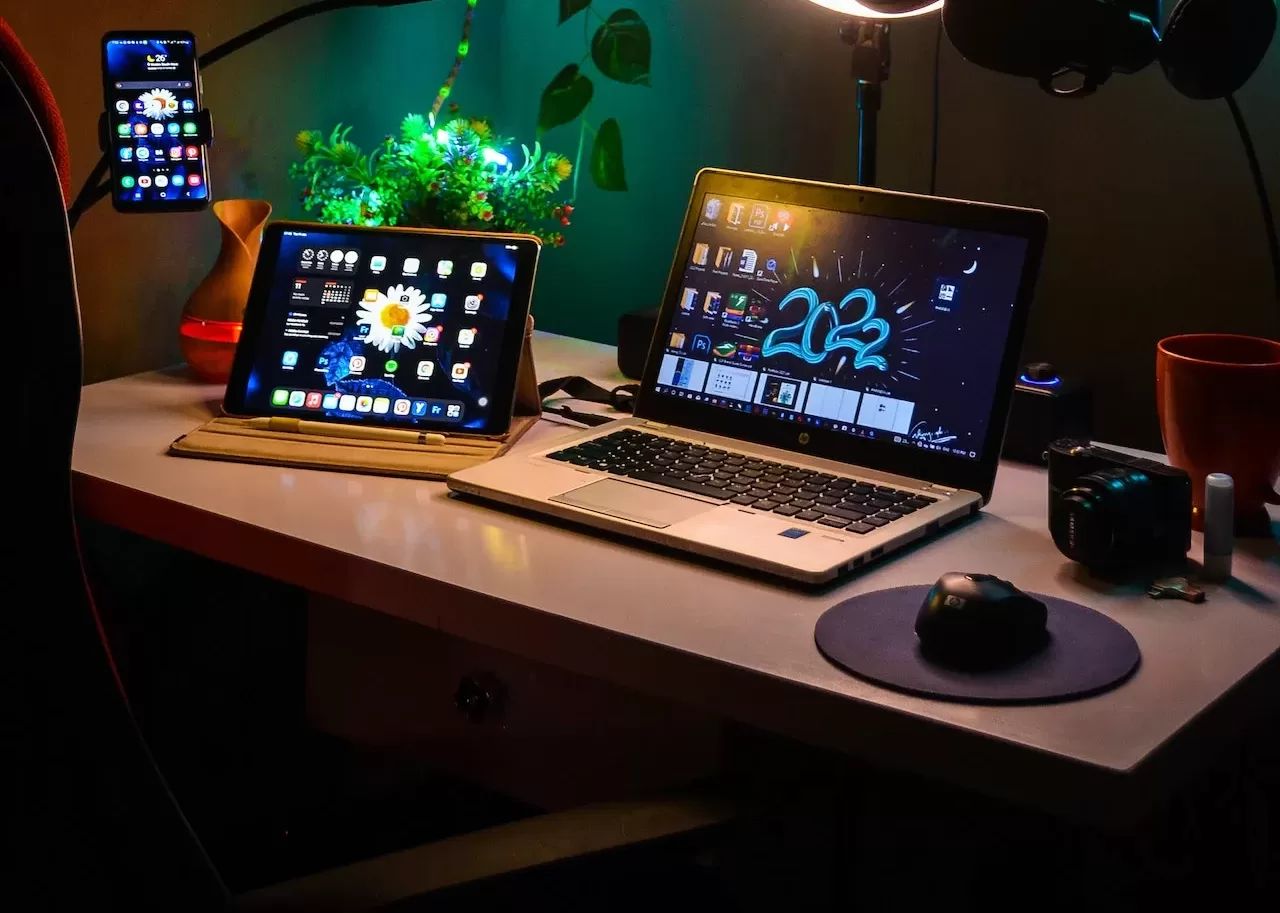Introduction
Welcome to the world of gaming laptops, where power and performance take center stage. As gamers, we all know the importance of having a laptop that can handle the demands of our favorite games. However, one aspect that often gets overlooked is battery life. Playing games can be a drain on the laptop’s battery, and if you’re not careful, you could find yourself running out of power in the middle of an intense gaming session.
But fear not, because in this article, we’re going to explore some effective tips and tricks to save battery on your gaming laptop. By making a few adjustments and tweaking some settings, you can significantly extend your laptop’s battery life without compromising on performance.
Now, you might be wondering why battery life is such a concern when gaming laptops are often plugged in during gameplay. Well, it’s not uncommon for gamers to take their laptops on the go or experience power outages. Additionally, constantly keeping your laptop plugged in can decrease the overall lifespan of the battery.
By implementing the following strategies, you’ll not only conserve battery power but also ensure that you can enjoy your gaming sessions even when you’re away from a power source.
Adjust Power Settings
One of the easiest and most effective ways to save battery on your gaming laptop is by adjusting the power settings. By reducing the power consumption of various components, you can optimize the battery life without compromising on performance too much.
Start by accessing the Power Options in your laptop’s Control Panel. Look for the “Power Saver” mode and select it. This mode will automatically adjust the power settings to conserve battery life. If you still require a bit of power for gaming, you can opt for the “Balanced” mode, which provides a good balance between performance and battery life.
You can also customize the power plan to further optimize battery usage. Decrease the maximum processor state to a lower percentage. This will reduce the power consumption of the CPU when it’s not under heavy load. Additionally, adjust the display brightness to a lower level. The display is often a significant power drain, so lowering the brightness can result in noticeable battery savings.
Furthermore, consider enabling the “Turn off display” and “Put the computer to sleep” options after a certain period of inactivity. This will automatically suspend power-consuming processes when you’re not actively using your laptop, further extending the battery life.
Remember to experiment with these settings and find the right balance for your gaming needs. While reducing power consumption is essential for preserving battery life, you don’t want to sacrifice too much performance and limit your gaming experience.
Close Unnecessary Background Processes
When it comes to gaming, it’s crucial to have your laptop focused on running the game smoothly. However, many background processes and applications can consume valuable system resources and drain your battery life. Closing unnecessary background processes can help optimize the performance and battery usage of your gaming laptop.
Start by examining the system tray in the taskbar. Right-click on any unnecessary icons and select “Exit” or “Close” to shut down any programs that you don’t need running in the background. These could be applications like music players, chat clients, or unnecessary system utilities.
In addition to manually closing programs, you can also use the Task Manager to identify resource-hogging processes and terminate them. Simply press “Ctrl + Shift + Esc” to open the Task Manager, navigate to the “Processes” tab, and sort the processes by CPU usage or memory usage. Look for any processes that are consuming a significant amount of resources and close them.
It’s also important to keep an eye on any programs that automatically launch at startup. These programs can burden your system and drain your battery without you even realizing it. To manage startup programs, open the Task Manager, go to the “Startup” tab, and disable any unnecessary programs from starting up when you boot your laptop.
By minimizing the number of unnecessary background processes running, you’ll free up system resources, improve performance, and extend the battery life of your gaming laptop.
Lower the Screen Brightness
The screen brightness of your gaming laptop can have a significant impact on its battery life. A bright and vibrant display might be visually appealing, but it also consumes a considerable amount of power. By reducing the screen brightness, you can conserve battery power and extend your gaming sessions.
Most gaming laptops have dedicated function keys or shortcuts to adjust the screen brightness. Look for symbols like a sun or a light bulb on your keyboard and press the corresponding key combination to decrease the brightness. Alternatively, you can access the brightness settings in the Control Panel or the system tray.
When lowering the screen brightness, aim for a level that is comfortable for you to view while still conserving power. Keep in mind that reducing it too much may strain your eyes, so find a balance that works for you.
Another useful tip is to enable the “Adaptive Brightness” feature if your laptop supports it. Adaptive Brightness automatically adjusts the screen brightness based on ambient lighting conditions. This means that if you’re in a brightly lit room, the screen brightness will increase, and in a dim environment, it will decrease, ensuring optimal visibility while maximizing battery efficiency.
By lowering the screen brightness and utilizing adaptive brightness, you can significantly reduce the power consumption of your gaming laptop’s display, allowing you to enjoy longer gaming sessions on a single charge.
Disable Keyboard Backlighting
Keyboard backlighting is a common feature in gaming laptops that enhances the visual appeal and usability of the keyboard, especially in low-light environments. However, the illuminated keys also contribute to battery drain. Disabling the keyboard backlighting when not necessary can help conserve battery power and extend your gaming sessions.
Most gaming laptops have dedicated function keys or software controls to adjust the keyboard backlighting. Look for symbols like a light bulb or a keyboard icon on your keyboard and press the corresponding key combination to switch off the backlighting. Alternatively, you can access the keyboard settings in the Control Panel or the gaming software provided by your laptop manufacturer.
Keep in mind that disabling the keyboard backlighting doesn’t affect the functionality of the keyboard itself. You can still type and play games with the same precision and accuracy. It simply eliminates the unnecessary power consumption associated with the backlighting.
If you do prefer to have the keyboard backlighting on, consider adjusting the brightness level to a lower setting. Dimming the backlighting can still provide visibility while reducing power consumption.
By disabling or minimizing the keyboard backlighting, you can save valuable battery power and ensure that it is available for more essential components of your gaming laptop.
Limit Graphics Performance
One of the major power consumers in gaming laptops is the graphics card. While it’s crucial for delivering smooth and high-quality visuals during gameplay, it also requires a significant amount of power. By limiting the graphics performance of your laptop, you can conserve battery life without sacrificing the overall gaming experience.
Most gaming laptops come with dedicated software or control panels that allow you to adjust the graphics settings. Look for options such as “Power saving mode,” “Battery saving mode,” or “Performance profiles.” These settings govern how the graphics card performs and can help optimize power usage.
Switching to a power-saving or battery-saving mode will reduce the graphics card’s performance, sacrificing some visual quality and frame rate in exchange for improved battery life. Alternatively, you can manually adjust the graphics settings for individual games, lowering the resolution, disabling or reducing anti-aliasing, or lowering the level of detail to reduce the demand on the GPU.
It’s important to note that limiting graphics performance may result in a slight decrease in gaming performance. However, for less demanding games or when you’re playing on battery power, the trade-off can be worthwhile.
Additionally, keeping your graphics drivers up to date can also contribute to better power optimization. Graphics driver updates often include performance improvements and power-saving features, so regularly check for updates and install them when available.
By adjusting the graphics performance settings and optimizing graphics usage, you can strike a balance between preserving battery life and maintaining an enjoyable gaming experience on your laptop.
Use Power-Saving Mode
Power-saving mode is a built-in feature on most laptops that helps conserve battery power by limiting various system operations. When activated, this mode adjusts the laptop’s settings to prioritize energy efficiency over performance. By utilizing power-saving mode, you can extend the battery life of your gaming laptop.
To enable power-saving mode, navigate to the power options in your laptop’s Control Panel or system settings. Look for options like “Power Saver” or “Power Plan” and select it. Alternatively, you may find a dedicated button or switch on your laptop that toggles power-saving mode.
Once activated, power-saving mode makes several adjustments to reduce power consumption. It may lower the CPU performance, decrease screen brightness, adjust the time before sleep mode activates, and modify other system settings to conserve energy. These changes help reduce power usage without significantly impacting your gaming experience.
However, keep in mind that power-saving mode may limit the performance of your laptop to extend battery life. While this is beneficial for tasks like web browsing or document editing, it may not be ideal for demanding gaming sessions. If you notice a significant decrease in gaming performance while in power-saving mode, consider using a balanced power plan or making manual adjustments to balance performance and battery life.
It’s worth noting that power-saving mode isn’t just for when you’re running low on battery. You can also use it when you’re gaming on battery power without access to a charger for an extended period. Activating power-saving mode from the start of your gaming session ensures that you maximize your battery life and enjoy uninterrupted gameplay.
Remember to experiment with power-saving mode and find the right balance between power conservation and performance for your specific gaming needs.
Manage Wi-Fi and Bluetooth
Wi-Fi and Bluetooth are essential features of a gaming laptop, but they can also consume significant amounts of battery power. By managing these wireless connections effectively, you can conserve battery life and extend your gaming sessions on the go.
When you’re not actively using Wi-Fi or Bluetooth, consider disabling them to prevent your laptop from continuously searching for and connecting to networks or devices. You can typically do this by accessing the network settings in your laptop’s Control Panel or system settings.
Another option is to use airplane mode, which disables all wireless communication on your laptop. While this may not be ideal for online gaming, it can be a useful option when you’re playing offline games or engaging in single-player campaigns.
If you do need to use Wi-Fi or Bluetooth while gaming, try to minimize your activity. For example, close any unnecessary background applications or browser tabs that may be using Wi-Fi. This reduces the strain on your wireless connection and conserves battery power.
Additionally, keeping your Wi-Fi and Bluetooth drivers up to date can also help optimize power usage. Check for driver updates on your laptop manufacturer’s website or use a driver update software to ensure you have the latest versions installed.
Lastly, consider using an Ethernet cable for online gaming sessions whenever possible. While Wi-Fi provides convenience, using a wired connection can help minimize the power consumption related to wireless communication.
By managing your Wi-Fi and Bluetooth connections effectively, you can save valuable battery power, allowing you to enjoy extended gaming sessions whether you’re online or offline.
Reduce External Peripherals Usage
When gaming on a laptop, it’s common to connect external peripherals such as gaming mice, keyboards, controllers, or even VR headsets for an enhanced gaming experience. However, these peripherals can consume additional power and drain your laptop’s battery faster. By judiciously managing and reducing the usage of external peripherals, you can extend your gaming sessions on battery power.
Firstly, consider disconnecting any peripherals that are not essential for your current gaming session. For example, if you’re playing a game that doesn’t require a controller, disconnect it to save power. Similarly, if you’re using a wired gaming mouse or keyboard, unplug them when not in use. These peripherals draw power even if they’re idle.
Opting for a wireless gaming mouse, keyboard, or controller that uses a USB receiver can also help conserve battery power. These peripherals often have their own power-saving features that automatically conserve energy when not in use. Remember to turn them off when you’re not gaming or when taking a break between gaming sessions.
Additionally, consider using peripherals with rechargeable batteries instead of disposable ones. Rechargeable batteries can be charged when your laptop is plugged in, reducing the need for replacements and minimizing overall waste. Make sure to charge them fully before gaming sessions to avoid unexpected battery drain during gameplay.
It’s also important to note that some peripherals, like gaming mice or keyboards, may come with software or drivers that allow for customization and additional features. While these features may enhance your gaming experience, they can also increase power consumption. Consider adjusting the settings and disabling any unnecessary features to save power.
By reducing the usage of external peripherals, choosing wireless options with power-saving features, and using rechargeable batteries, you can optimize your laptop’s battery life and enjoy longer gaming sessions on the go.
Keep Your Laptop Cool
Properly managing the temperature of your gaming laptop is not only crucial for its performance but also for preserving battery life. Excessive heat can not only cause your laptop to slow down but also significantly impact the battery’s efficiency. By implementing strategies to keep your laptop cool, you can ensure optimal performance and extend your gaming sessions.
Firstly, make sure to use your gaming laptop on a flat, hard surface that allows for proper airflow. Soft surfaces like beds or sofas obstruct the laptop’s ventilation, leading to a build-up of heat. Using a laptop cooling pad can also help improve airflow by elevating the laptop and providing additional cooling fans.
Clean the ventilation ports and fans regularly to remove accumulated dust and debris. Dust acts as an insulator, trapping heat inside your laptop and hindering its cooling system. Use compressed air or a soft brush to gently clean the vents and fans, ensuring that air can freely flow to cool the internal components.
Avoid gaming in direct sunlight or hot environments. Heat from sunlight and high ambient temperatures can further elevate the internal temperature of your laptop, putting additional strain on the cooling system and the battery. Opt for a cool, well-ventilated area to maximize the cooling efficiency.
Consider using software or hardware utilities to actively monitor and control your laptop’s temperature. Some gaming laptops come with built-in cooling management software that allows you to adjust fan speeds or performance profiles to regulate temperature. Alternatively, third-party cooling software or cooling pads with built-in fans can also help dissipate heat more effectively.
Another tip is to minimize background processes and close unnecessary apps while gaming. Running multiple programs concurrently increases the CPU and GPU load, generating more heat. By focusing your laptop’s resources on the game itself, you can reduce heat production and increase the overall efficiency of your cooling system.
Lastly, keep an eye on your laptop’s battery temperature. Excessive heat can degrade the battery’s lifespan and capacity over time. If possible, remove the battery while gaming and rely solely on AC power. This reduces the strain on the battery and prevents it from overheating.
By keeping your gaming laptop cool and optimizing its cooling system, you can enhance its performance, preserve battery life, and ensure a longer lifespan for your beloved device.
Conclusion
Gaming on a laptop offers the flexibility to enjoy your favorite games on the go, but it also comes with the challenge of managing battery life. By implementing the tips and strategies outlined in this article, you can significantly extend your gaming sessions and maximize the battery life of your gaming laptop.
Adjusting power settings, closing unnecessary background processes, and lowering the screen brightness are simple but effective ways to conserve battery power without sacrificing performance. Disabling keyboard backlighting, limiting graphics performance, and using power-saving mode further optimize power usage and enhance battery life.
Managing Wi-Fi and Bluetooth connections, reducing external peripherals usage, and keeping your laptop cool are additional techniques to preserve battery life. By being mindful of wireless connections, minimizing peripheral usage, and ensuring proper cooling, you can ensure optimal battery performance and longevity.
Remember, finding the right balance between performance and battery life is essential. Experiment with these strategies to customize your laptop’s settings according to your gaming preferences and power needs.
By adopting these practices, you can enjoy extended gaming sessions, even when away from a power source. So, go ahead, put these tips into action, and unlock the full gaming potential of your laptop without worrying about running out of battery power.







